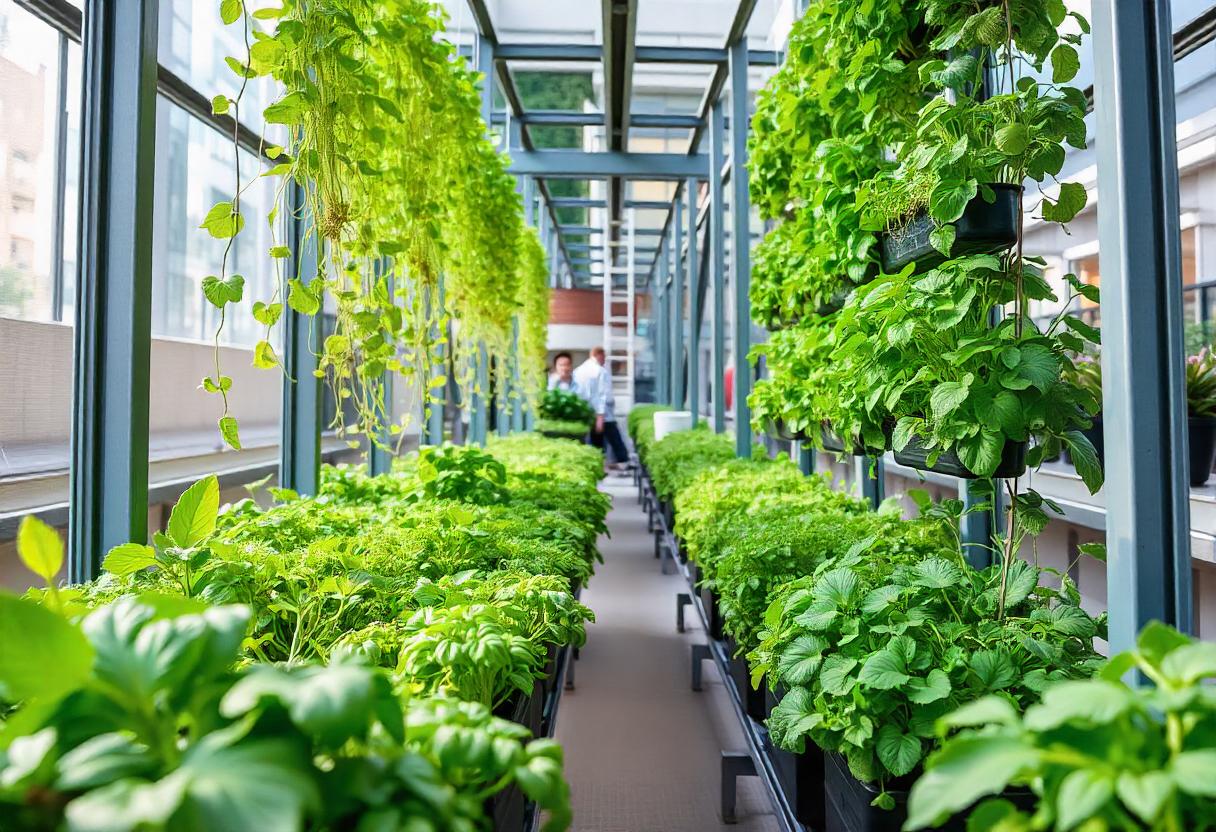
Urban farming and vertical agriculture are two innovative approaches addressing the challenges of food production in densely populated areas. As the world’s urban population continues to grow, these methods offer solutions for sustainable food production close to city centers, reducing transportation costs and contributing to food security.
What is Urban Farming?
Urban farming refers to the practice of cultivating, processing, and distributing food within urban areas. It often involves growing crops on rooftops, balconies, and vacant lots or in community gardens. Urban farming provides fresh produce for local communities and creates opportunities for individuals to engage in agriculture on a small scale.
Urban farming can take various forms, including hydroponics, aquaponics, and traditional soil-based farming. Hydroponics involves growing plants in nutrient-rich water, while aquaponics integrates fish farming with plant cultivation, using waste from the fish to nourish the plants. These innovative techniques maximize space efficiency, making urban farming adaptable to the limited land available in cities.
Benefits of Urban Farming
Urban farming offers several benefits, including reducing the carbon footprint of food transportation, improving food security, and enhancing local economies. By producing food closer to where people live, urban farming decreases the distance food needs to travel, thereby reducing greenhouse gas emissions. It also provides fresh, healthy produce to urban populations, improving access to nutritious food.
Urban farming can also create jobs and opportunities for small businesses. Farmers’ markets, local grocery stores, and restaurants can source products from urban farms, boosting local economies and supporting small-scale farmers.
What is Vertical Agriculture?
Vertical agriculture, also known as vertical farming, involves growing crops in vertically stacked layers, often in controlled indoor environments. This method allows farmers to maximize the use of space, making it particularly effective in urban areas where land is limited. Vertical farms typically use advanced technologies such as hydroponics, aeroponics, and artificial lighting to grow crops without the need for soil or sunlight.
By creating optimal conditions for plant growth, vertical farming can produce higher yields than traditional farming methods. Additionally, because these farms are often located indoors, they are protected from external weather conditions and pests, reducing the need for pesticides and enabling year-round production.
Benefits of Vertical Agriculture
Vertical agriculture offers numerous advantages, including efficient land use, reduced water consumption, and consistent crop production. By stacking crops vertically, farmers can grow more food in a smaller footprint, which is particularly useful in cities where space is scarce. Vertical farms use up to 95% less water than traditional farming methods by recycling water within the system.
Furthermore, vertical farms can be established in urban areas, providing fresh produce to city dwellers and reducing the need for long-distance transportation. This not only lowers transportation costs but also minimizes the environmental impact associated with food distribution.
Challenges Facing Urban and Vertical Farming
Despite the advantages, urban and vertical farming face several challenges. One significant barrier is the high initial investment required to set up these systems. The technology and infrastructure needed for vertical farming, such as LED lighting, climate control, and automation systems, can be costly. Urban farming also requires access to land or rooftops, which can be expensive or difficult to obtain in densely populated cities.
Additionally, while vertical farming is highly efficient, it requires substantial energy input, particularly for artificial lighting and climate control. As a result, the environmental benefits may be offset by increased energy consumption unless renewable energy sources are used.
The Future of Urban Farming and Vertical Agriculture
Urban and vertical farming have the potential to transform the way we produce food, especially in cities. With advances in technology and the growing demand for sustainable food production, these methods may become more widespread in the coming years. Governments and organizations are also recognizing the importance of these systems in addressing food security and are investing in policies and initiatives to promote their development.